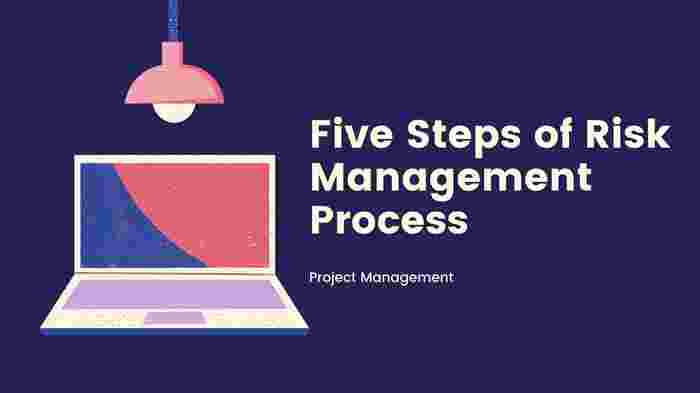In the world of business, liability risks can often feel like an invisible burden, one that, if neglected, can lead to costly damages, reputational harm, and even potential closures. Managing these risks effectively can create a solid foundation for the health and growth of your business. Let’s dive into practical steps you can take to protect your company and reduce its exposure to liability risks.
What is Business Liability?
Business liability refers to the legal responsibilities that a business has toward others, including clients, employees, and the public. In practical terms, it covers situations where a company might be held liable for damages caused by its products, services, or activities. Understanding the nature of these liabilities is crucial in identifying the right approach to manage them effectively.

Why Managing Liability Risks Matters
Liabilities aren’t just legal concepts; they represent real-world threats that can impact a business financially, operationally, and reputationally. The goal of managing these risks is not only to avoid potential losses but also to foster a secure environment for growth and trust.
Common Types of Business Liability Risks
Several common types of liability risks can affect a business. Knowing these can help you pinpoint vulnerabilities within your operations:
- Product Liability – When products cause harm or malfunction, businesses may be held responsible.
- Employee Liability – Injuries at the workplace or unlawful practices can expose your business to legal claims.
- Property Liability – Incidents occurring on your business premises may lead to claims if someone is injured.
Understanding these categories is the first step in crafting a thorough risk management strategy.
Assessing Your Business’s Liability Exposure
Every business has unique risks based on factors like industry, location, and scale. Begin by identifying areas of your business that might be vulnerable to claims. This process can involve:
- Conducting a risk assessment to analyze potential issues.
- Consulting with legal experts familiar with your industry.
- Reviewing any historical incidents or claims related to your type of business.
This tailored evaluation will give you a roadmap of where to focus your risk management efforts.
Practical Tips to Minimize Business Liability Risks
Minimizing liability risks doesn’t need to be overwhelming. Here are some actionable steps to help protect your business:
- Stay Up-to-Date with Regulations – Know the legal requirements relevant to your business, especially if you operate in a regulated industry.
- Ensure Quality Control – Implement strict quality control standards to minimize the risk of product-related issues.
- Adopt Workplace Safety Measures – Enforce safety protocols and provide regular training to employees.
- Monitor Property Maintenance – Regularly inspect and maintain your business premises to reduce potential hazards.
These preventive measures go a long way in reducing your business’s exposure to liabilities.

Creating a Risk Management Plan
A well-structured risk management plan is a cornerstone of liability risk reduction. Here’s what you should include:
- Identify Risks – List potential risks and rank them based on their likelihood and potential impact.
- Develop Mitigation Strategies – Create specific steps to address each risk.
- Assign Responsibilities – Ensure each department or team member knows their role in the plan.
- Set a Review Schedule – Regularly revisit and update your plan to reflect any changes in operations or regulations.
Having a written, actionable plan not only clarifies responsibilities but also enhances your business’s ability to respond effectively to unforeseen events.
Employee Training and Compliance
Employees are on the front lines of risk management. Regular training sessions can help them understand the importance of compliance, follow safety practices, and know how to respond to potential liability issues. Encourage open communication, so employees feel comfortable reporting hazards or suggesting improvements.
Using Contracts to Limit Liability
Contracts are your first line of defense in defining responsibilities and protecting your business from certain liabilities. Draft clear, specific contracts for all agreements, including those with clients, vendors, and employees. This step helps establish boundaries and expectations, reducing the likelihood of disputes.
Insurance Solutions for Business Liability
Insurance is one of the most straightforward ways to manage liability risks. Consider these essential types:
- General Liability Insurance – Covers injuries and property damage claims.
- Professional Liability Insurance – Protects against claims of negligence or errors in professional services.
- Product Liability Insurance – Provides coverage for claims related to product defects.
- Workers’ Compensation Insurance – Required in most places to cover employee injuries.
Selecting appropriate coverage types for your business gives you a safety net to address potential claims without crippling costs.

Reviewing and Updating Liability Insurance
Your business isn’t static, and your insurance shouldn’t be either. Regularly review your policies to ensure they reflect any changes in your operations, workforce, or revenue. Annual reviews are a good rule of thumb, but if your business experiences significant changes, consider discussing your policy needs with your insurer sooner.
Cyber Liability and Data Protection
With the increase in digital threats, cyber liability is becoming a critical aspect of business liability. Protecting sensitive data with robust cybersecurity measures, regular employee training, and strong passwords is essential. Cyber liability insurance can also help mitigate financial losses from breaches, covering aspects like legal fees, data restoration, and public relations.
Legal Support and Consultation
Working with a legal expert can be invaluable when crafting contracts, reviewing compliance standards, and addressing potential liability issues. Investing in regular consultations can help your business avoid pitfalls and create sound legal protections.
Documenting Policies and Procedures
Proper documentation supports consistency and accountability. Clearly documented procedures also serve as evidence that your business took responsible measures if a liability claim arises. Maintain records for everything from employee training to maintenance logs and safety checks.
Regular Risk Assessment Reviews
Risk assessment isn’t a one-time activity; it’s an ongoing process. Schedule regular reviews, especially after any changes in business operations, new product launches, or regulatory updates. These reviews can help keep your risk management plan effective and relevant.
Handling Liability Claims
When a liability claim occurs, how you respond can make a significant difference. Act promptly and investigate the situation thoroughly, consult with legal and insurance professionals, and document all actions taken. Swift, appropriate responses can help resolve claims while protecting your reputation.
Conclusion
Managing business liability risks is about preparation, awareness, and proactive steps. With a robust risk management plan, adequate insurance coverage, and clear protocols, you can build a resilient business that stands strong against potential claims. Remember, liability risk management isn’t a one-time task; it’s a continual process that evolves as your business grows.
FAQs
- What are the primary types of business liability insurance? General liability, professional liability, product liability, and workers’ compensation are essential insurance types to consider.
- How often should a business review its liability insurance? Ideally, review your insurance policies annually or whenever there’s a major operational change.
- What is product liability insurance, and who needs it? Product liability insurance covers businesses in case their products cause harm, and it’s vital for manufacturers, retailers, and distributors.
- Why is employee training important for liability management? Training helps employees understand and implement safety and compliance measures, reducing the risk of accidents or claims.
- Can contracts limit business liability? Yes, well-drafted contracts can set clear expectations and protect your business from certain liabilities.
- How does cyber liability insurance protect a business? It covers losses due to data breaches, including legal fees, data recovery, and PR costs.
- What is the role of risk assessment in managing liability? Risk assessment identifies potential issues, allowing businesses to create targeted strategies to mitigate risks.

